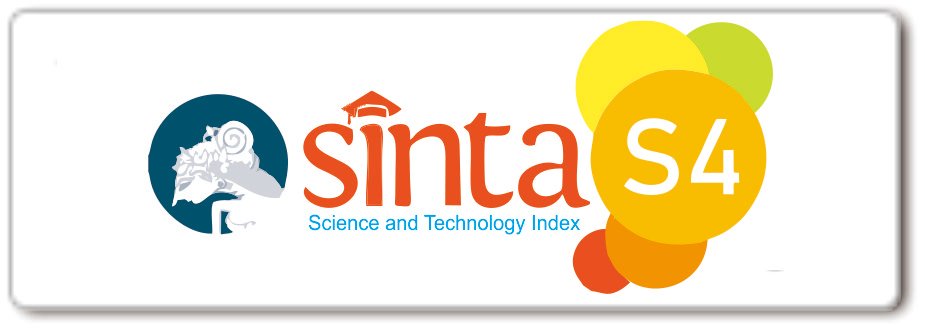KERION CELSI YANG DISEBABKAN OLEH TRICOPHYTON VERRUCOSUM PADA PASIEN IMUNOKOMPROMAIS
DOI:
https://doi.org/10.33820/mdvi.v46i1.51Abstract
Kerion celsi merupakan manifestasi inflamasi pada infeksi dermatofita zoofilik diskalp. Salah satu penyebabnya adalah Trichophyton verrucosum. Imunitas seluler pada pasien imunokompromais terganggu sehingga rentan terinfeksi dermatofita.
Pria, 73 tahun mengeluh benjolan bernanah di kepala yang nyeri dan gatal sejak 3 bulan sebelum konsultasi. Pada pemeriksaan dermatologis parietal skalp didapatkan alopesia berbatas tegas dengan boggy eritematosa 5 cm dan pustul folikular. Pemeriksaan dengan lampu Wood tidak menunjukkan fluoresensi. Pemeriksaan mikroskopik dengan KOH 20% didapatkan hifa dan artrokonidia ektotriks. Numerical rating score (NRS) nyeri 8, dan gatal 4. Identifikasi kultur kerokan kulit kepala dan rambut menunjukkan Trichophyton verrucosum. Pasien didiagnosis kerion celsi ,diterapi dengan griseofulvin microsized 20 mg/kg berat badan/hari selama 8 minggu, dan prednison 0,5 mg/kg berat badan/hari selama 10 hari yang kemudian diturunkan perlahan. Ditambahkan krim terbinafine HCL 1 % didahului kompres basah dua kali sehari. Setelah 8 minggu, perbaikan NRS mencapai nol, tanpa efek samping.
Kerion celsi seringkali terjadi pada anak, jarang pada dewasa. Pada kasus ini terjadi pada pasien neoplasma berusia lanjut dalam kemoterapi. Usia lanjut, kanker paru, kemoterapi geftinib, diabetes mellitus dan kontak langsung dengan hewan peliharaan merupakan faktor risiko kondisi imunokompromais dan inokulasi patogen sehingga mempermudah dermatofita menginvasi rambut.
Kata kunci: kerion celsi, Tricophyton verrucosum, imunokompromais, griseofulvin
Downloads
References
spectrum in nine cases. Irish J Med Sci.
1990;1:159:14-8.
2. Rippon JW. Medical mycology the pathogenic fungi and the
pathogenic actinomycetes. Edisi ke-2. Philadelphia: WB
Saunders; 1982.h.154-80.
3. Kartadjukardi E, Triestianawati W. Tinea kapitis. MDVI.
2002;29:153-62.
4. Schieke M. Stefan, Garg Amit. Superficial fungal
infection. Dalam: Wolff Klaus, Goldsmith Lowell A, Katz
Stephen I, Gilchrest Barbara A, Paller Amy S, Leffel
David J, penyunting. Fitzpatrick’s Dermatology in General
Medicine. Edisi ke 8. New York: McGraw-Hill;
2012.h.2277-97
5. Bergson CL, Fernandes NC. Tinea capitis: study of
asymptomatic carriers and sick adolescents, adults and
elderly who live with children with the disease. Revista do
Instituto de Medicina Tropical de São Paulo. 2001;43:87-
91.
6. Sari A, Widaty S, Bramono K, Miranda E, Ganjardani M.
Tinea kapitis di Poliklinik Kulit dan Kelamin RSUPN dr.
Cipto Mangunkusumo Jakarta Periode Tahun 2005-2010.
MDVI. 2012;39:113-7.
7. Tey HL, Tan AS, Chan YC. Meta-analysis of randomized,
controlled trials comparing griseofulvin and terbinafine in
the treatment of tinea capitis. J Am Acad Dermatol.
2011;64:663-70.
8. Bose SE, Kulkarni SG, Akhter I. The incidence of tinea
capitis in a tertiary care rural hospital-a study. J Clin
Diagn Res. 2011;5:307-11.
9. Ginsburg CM, Gan VN, Petruska M. Randomized
Controlled Trial of Intralesional corticosteroid and
griseofulvin vs. griseofulvin alone for treatment of kerion.
The Pediatr Infec Dis J. 1987;6:1084-7.
10. Meadows-Oliver M. Tinea capitis: diagnostic criteria and
treatment options. Pediatric nursing. 2009;1;35:53.
11. Liu ZH, Zhang Y, Zhu J, Dai YQ, Shen H. Successful
treatment of severe kerion Celsi in an
immunocompromised girl with evacuation of pus,
terbinafine and short course glucocorticosteroids. J Med
Mycol. 2016;31:26:42-5.
12. Okafor UH. Pattern of Clinical Presentations in
Immunocompromised Patient. INTECH Open Access
Publisher; 2012. h.177-90.
13. Pandhi I, Pandhi SB, Pandhi S. Tinea Capitis in 31 Year
Old Adult Male: A Rare Entity. J Clin Case Rep.
2015;13:2014.
14. Irimie M, Oanta A, Alexandrina Irimie C, Loan Minea D.
Prevalence and Antifungal Susceptibility Patterns of
Dermatophytes Isolated from Patients with Neoplastic
Diseases: A Case Control Study. Acta
Dermatovenerologica Croatica. 2015;23:108.
15. Litt Jerome Z. Litt’s Drug Eruptions and Reactions Manual.
Edisi ke 19. Ohio : CRC press; 2013. h. 190.
16. Phan NQ, Blome C, Fritz F, Gerss J, Reich A, Ebata T,
dkk. Assessment of pruritus intensity: prospective study
on validity and reliability of the visual analogue scale,
numerical rating scale and verbal rating scale in 471
patients with chronic pruritus. Acta dermatovenereologica.
2012 Sep 1;92:502-7.
17. Hjermstad MJ, Fayers PM, Haugen DF, Caraceni A,
Hanks GW, Loge JH, dkk. Studies comparing Numerical
Rating Scales, Verbal Rating Scales, and Visual Analogue
Scales for assessment of pain intensity in adults: a
systematic literature review. Journal of pain and symptom
management. 2011:30;41:1073-93.
18. Rouzaud C, Hay R, Chosidow O, Dupin N, Puel A,
Lortholary O, dkk. Severe dermatophytosis and acquired
or innate immunodeficiency: a review. Jof Fungi.
2015:31;2:4.
19. Lestarini D, Pratomo Untung S, Djuanda A. Peranan
imunitas selular dalam dermatofitosis.
MDVI.1995;22:126-30.
20. Lee MH, Yoo JY, Suh MK, Ha GY, Kim JR, Lee HJ.
Kerion Celsi caused by Trichophyton verrucosum
Probably transmitted from cattle. Korean J Med Mycol.
2012; 17: 230-35.
21. Maza luis M, Pezzlo Marie t, Baron Ellen J. Color Atlas of
Diagnostic Microbiology. Edisi ke 5. California : Mosby-
Year Book inc; 1997.h.113-45.
22. Grover C, Arora P, Manchanda V. Comparative evaluation
of griseofulvin, terbinafine and fluconazole in the
treatment of tinea capitis. Int J Dermatol. 2012;51:455-8.













